Mashed potatoes are serious comfort food and let’s face it – the holidays just wouldn’t be the same without them! So, how long are mashed potatoes good for anyway and what can you do to keep them yummy longer?
According to the USDA, cooked potatoes such as mashed potatoes will last about 3 to 4 days in the refrigerator. Frozen mashed potatoes, however, may be stored for 4 to 6 months, although they will really taste their best if you eat them within the first 2 months. For longer-term storage, however, vacuum-sealed frozen mashed potatoes will still taste good for as long as 8 to 12 months in your freezer!
By popular request, we’re going to take a closer look at mashed potatoes and their shelf life, ways that you can store them (including making your own potato flakes!), and how to spot when mashed potatoes have gone bad.
If you’re ready, then let’s take a look at mashed potatoes and how long you can expect them to stay yummy!
Mashed potatoes – Understanding their shelf life
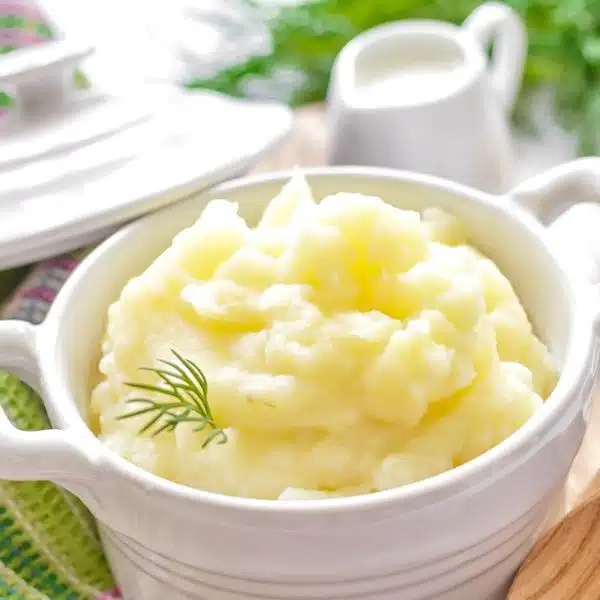
To understand why mashed potatoes only last 3 to 4 days in the fridge, it’s best to consider how long it lasts at room temperature and also to consider the individual ingredients. Mashed potatoes at their most basic – just mashed up and mixed with butter – are good for about 2 hours at room temperature before they start becoming a risk for colonizing dangerous bacteria
If the temperature is over 90 degrees, then you’ve got half the time – just 1 hour – before you should really throw them out. On their own, the biggest risk comes from the fact that they are warm, moist, and have little protein (about 3.4 grams of protein per cup), so they are an appealing place for bacteria to come together and colonize.
If you’ve added dairy to your mashed potatoes, then they could be considered bad in as little as half an hour (although almost no one will worry with this small amount of time – this is one of those ‘technical’ details that people quote but almost no one really practices).
With that said, if you are adding buttermilk as your dairy, instead of regular milk, then it’s a little more robust. Buttermilk has a longer shelf life than regular milk, due to a high lactic acid content that is actually hostile to bacteria, so keep that in mind when you are mixing up your mashed potatoes.
Now that you know how long they last at room temperature and why, let’s take a look at the best ways to store your mashed potatoes so that you can enjoy them easily at your leisure. They take a little time to make, after all, so it’s definitely worthwhile information to have!
What are the best methods for storing mashed potatoes?
When it comes to storing your delicious mashed potatoes, you’ve got 3 basic ways to go about it – freezing, vacuum sealing, and dehydrating them (if you want to make your own ‘instant potatoes’.
We’ll talk a little about each option so that you’ll know what to expect as far as storage and taste expectations – let’s take a look!
Freezing mashed potatoes
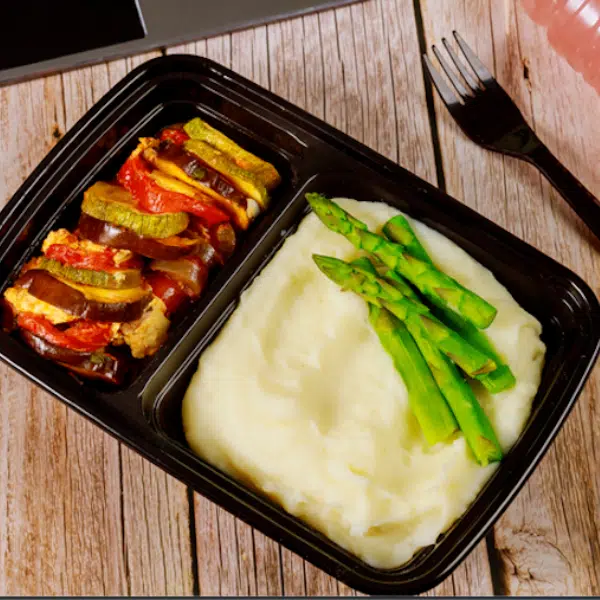
Freezing is the most common method of storing your mashed potatoes and it’s a pretty good one – it’s easy to do with a resealable container or even a Ziploc bag, and your potatoes should still taste great for 4 to 6 months (although they can last for up to 12, they’ll just be a little bit bland).
The cream and butter that you usually put in mashed potatoes will be a plus when you are freezing them – you can freeze plain mashed potatoes, but cream and butter actually make them freeze up a little more smoothly and reheat better.
One caveat, however, is mayonnaise. Some popular Southern mashed potato recipes will use this and if you freeze it, then the potatoes will still be good, but there will be an effect on the taste.
That’s because mayonnaise is an emulsion of oil, vinegar, and egg, and these 3 ingredients freezing at different time rates will make the potatoes fluff a little and the consistency will be a little weird since they don’t emulsify back to normal.
The easiest way to freeze mashed potatoes to pack them for lunches later is to do the following:
- Scoop out individual portions onto a lined baking sheet.
- Place this sheet in the freezer overnight or for a few hours during the day until the potatoes are frozen.
- Move your potato portions into Ziploc freezer bags and mark the date on them with a marker (if they might be in there for a while – this is a good habit to get in if you freeze a lot of leftovers!).
Potatoes are about 80% water, so keep that in mind when you reheat them – a little crystallization is going to happen, so the texture will be a little different. That said, you can add a little milk or if you like mayo, that’s fine, and you can whip up some smoother, still-very-yummy mashed potatoes when you’re ready to eat them.
Vacuum-sealing mashed potatoes
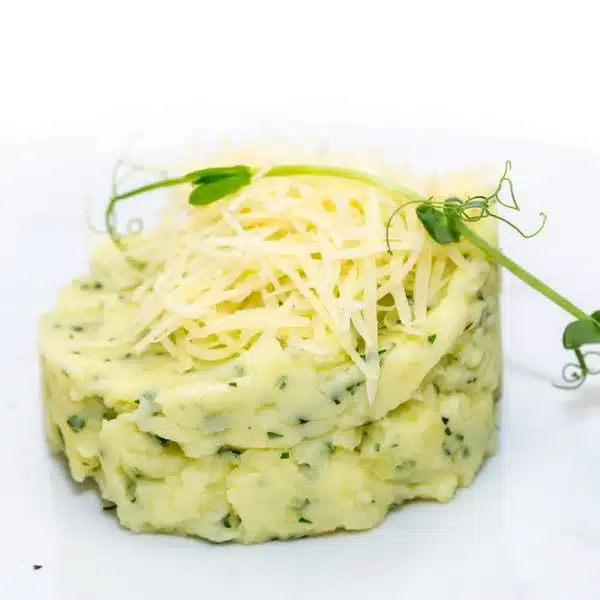
Vacuum sealers are really neat to have in your kitchen. While they don’t work for every type of food, you can certainly use them for your mashed potatoes and after you seal them, you can pop them in the freezer and they’ll be good for 8 to 12 months!
If you’ve never owned a vacuum sealer, you can get one like this Geryon Vacuum Sealer machine and it’ll set you back a little less than the cost of two Pizza Hut pepperoni pizzas, which is definitely worth it for the perks. You’ll get a lot of extra storage time and if you pack a lunch for work, you can freeze batches of favorite foods and then grab individual vacuum-sealed packets for an instant ‘mix and match’ lunch!
Using the vacuum sealer to store mashed potatoes is really a piece of cake, and the process looks something like this:
- Let your mashed potatoes cool down – you never want to vacuum seal something that’s hot, it’ll trap extra moisture and might compromise the sealing process.
- Get a lined baking sheet and scoop out individual portions of your mashed potatoes onto it. Single-scoop balls are the easiest, but you’ll want to smoosh them into individual ‘patties’ so that they’ll be a good fit for your vacuum seal bags.
- Pop that tray into your freezer for an overnight freeze or 3 to 4 hours if it’s daytime, and we’re ready to seal.
- Bag one or two patties per bag (depending on your sealer and bag size) load them into the sealer, and then hit your sealing button. Check the bags to make sure that they are sealed airtight and then write the date on top with a marker and stack them in the freezer for when you want your mashed potato fix!
Dehydrating them to make your own mashed potato flakes
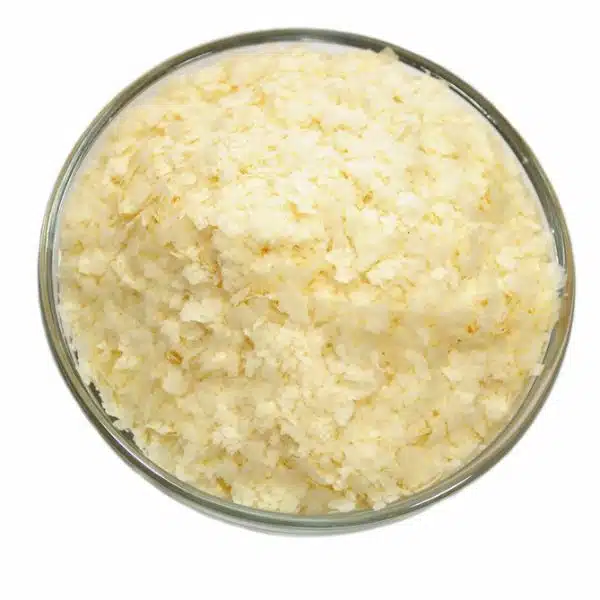
Instant mashed potatoes can be pricey if you get them at the store, but if you like to grow potatoes at home and often find yourself rushing to make and freeze various potato dishes, then you might just want to make your own instant potato flakes to store away and use later!
The steps for doing this come to us from Heather at the Homesteading Hippy and while we’ll give you a synopsis here with the steps, you can see her excellent article here and it includes some pics and some additional tips on the process.
You’ll need a food dehydrator for this and something like this Hamilton Beach Digital Food Dehydrator will work a treat with that said, here’s how you make your own potato flakes:
- Clean and peel your potatoes – start with a small batch, say 10 potatoes, just to see how it works and later you can make all that you’ve got the space for drying. We should note at this time that while you could technically leave a little skin on your spuds, it’s not recommended as this tends to add a little bitterness to dehydrated potatoes. You can experiment with sweetening the skin up later if you like, but let’s start without the peels for now to learn this technique.
- Put your cleaned and peeled potatoes in a big, old cooking pot, and make sure there’s enough water to cover them. Bring this to a boil and cook them up until they’re nice and mushy – think ‘in danger of falling apart when you poke them with a fork’ and that’s just about perfect.
- When the potatoes are done, DO NOT drain them – we’re going to mash them in the water that we boiled them in. Any spices or dairy additions to your potatoes are something that you’ll add when you rehydrate them, so for now we just want to start moving potatoes into a large mixing bowl and whipping them smooth with the hot water. You can also use a Kitchen aid if you’ve got one and save yourself a pretty parcel of time.
- Start laying out mashed potatoes on your dehydrator sheet. Thin layers are best. Heather advises that if your potatoes are stacked too thick, they can turn black as they dehydrate, and while the taste will be the same, they won’t look as yummy so keep the potato stacks thin.
- Dehydrate the potatoes at 140 degrees for the next 24 to 36 hours (depending on the thickness). After approximately 12 to 15 hours you can check them and flip the potatoes over for more even coverage and faster drying.
- The potatoes will dry up into golden-brown flakes and you can tell when they are done by trying to bend one. If it flexes, then they aren’t ready yet, but if the pieces break then we’re golden.
- Take your flakey, dried potatoes and stick them in a blender or a food processor, so that we can break them up into finer flakes. You can store these away in a cool, dry place in an airtight container, and they last a long time – possibly up to 2 years or a little more, but it’s really best to eat them within the first year for the best instant potatoes.
When you are ready to eat them, just treat your potatoes like standard potato flakes from the store – you can boil 2/3 of a cup of water, add a spoon of butter, splash in some milk, and stir 2/3 of a cup of flakes with and you’ll have hot mashed potatoes in a minute or two. If you HATE the time it takes to make regular mashed potatoes, then you might have just found your new favorite snack!
How do I know if mashed potatoes have gone bad?
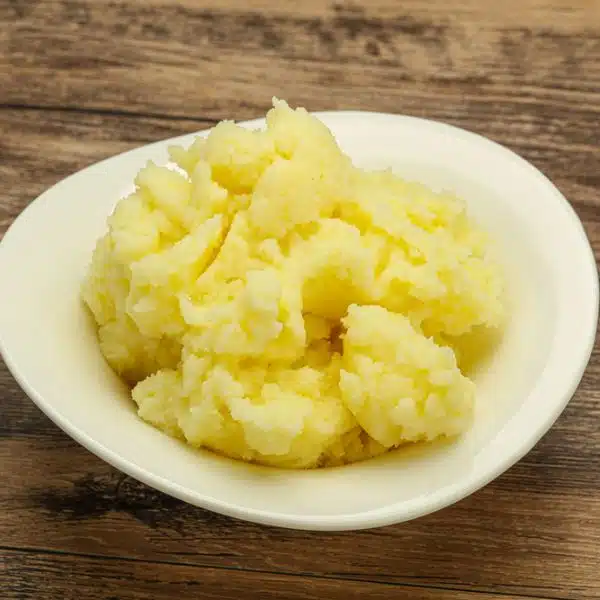
One of the downsides of mashed potatoes is that depending on what we’ve mixed with them, it can be a little tricky to tell when they are going off. As such, you’re going to have to use your best judgment, but we’ll detail some of the telltale signs to look for in order to help you as much as possible in making your decision.
Signs that your mashed potatoes are better off discarded include the following:
- ‘Off’ Scents – One good thing about potatoes is that most of us eat them enough that we know exactly how they smell. Potatoes are slightly earthy and any deviation from that is probably a good indicator that you should trash those leftovers and snack on something else. Vinegary smells are a good example and also look to see if your airtight container seems to have gained air – if it has, then mold might be in there, visible or not, making CO2 as they eat your potatoes!
- Discoloration – Another perk when evaluating your leftover mash, usually they’re going to be a smooth, solid white, unless you like the variety with a little skin, although even then the normal color scheme is one that you’ll recognize. If they are turning gray or otherwise darkening, then that’s a bad sign, and yellow is only okay if you’ve mixed mustard as a normal part of your mashed potato recipe. Simply put, if the color has changed, don’t eat them!
- Funky texture – Your mashed potatoes’ consistency will change a little from freezing and that’s okay, but if they are getting slimy or grainy, then it’s best to chunk them into the bin.
- Weird taste – Usually during the course of the decision, you’re going to simply shrug and take a quick taste, so just be honest with yourself. If they taste weird, you know that you shouldn’t be eating them so we’ll just leave it at that.
- Visible mold – Visible patches of mold are an instant trip to the garbage can for your mashed potatoes. While some folks subscribe to the ‘scoop that part out and heat the heck out of the potatoes’ philosophy, it’s not really the safest option so we can’t recommend it in good conscience. Where there’s visible mold, you can bet there are not-so-visible bits and if you eat those potatoes, you’re going to eat some of that mold too!
FAQs
While we strive to be as thorough as possible, there are always useful facts that slip down the drain and to combat this a little, we’d like to share some frequently asked questions before we officially wrap things up. Here are a few that we hope you’ll find useful!
What is the best way to reheat leftover mashed potatoes?
The absolute best way to reheat leftover mashed potatoes is in your oven, hands down. Just mix a little melted butter add some milk or buttermilk if you like and pop it into a baking dish, which you should then cover with foil.
Heat it to 350 degrees for 20-30 minutes and if you have a kitchen thermometer, you want the potatoes to be about 175 degrees in the middle- that’s the ‘kill zone’ temperature for most bacteria and as an added bonus, your potatoes will be hot and yummy!
Can I freeze mashed potatoes in an ice cube tray?
Yes, actually, and one quick freezing method is to do exactly that when the potatoes freeze, pop the cubes out and put them in a ziplock baggie, write the date on it, and they should be yummy and ready to go for up to 2 months. While they can technically last 4 to 6 months, they won’t taste nearly as good after the 2-month mark as potatoes are 80% water and the crystallization going on in the potatoes won’t do the flavor any favors if they’re in the freezer for too long.
What is the secret to freezing mashed potatoes?
In a word, the secret to yummy frozen mashed potatoes is ‘fat’. Dairy such as milk or buttermilk, sour cream, butter – and mixed-in fats, really – except for mayonnaise as it can separate. This helps the potatoes to freeze more uniformly and when you reheat them, you can add a dollop more of butter and they’ll usually whip and heat up nicely.
Without extra fat, you’re at the mercy of the high water content of the potatoes, and they simply won’t freeze as efficiently – so add a little fat first and you’ll greatly increase the chance of your reheated potatoes being delicious!
Some final words on how long mashed potatoes are good for
In this article, we’ve talked about mashed potatoes and how long they are good for, and in a nutshell, they last for 3 to 4 days in the refrigerator, and 4 to 6 months in the freezer (although they’re best eaten before the 2-month mark), and 8 to 12 months vacuum sealed and frozen.
Don’t forget that you can dehydrate them to make your own potato flakes. This can save you a lot of money if you like instant potatoes and if you’re growing them in your garden, it’s also a really convenient way to be more self-sufficient.
Finally, if you are freezing your potatoes, then a little fat can go a long way toward making them taste their best when you reheat them – they’ll freeze better and taste much better when you reheat them later. Thanks so much for visiting us today and please be sure to share your best mashed potato tips in the comments – both the writers and the other readers here love them, so we look forward to your feedback!





David learned to cook at an early age after his mother told him that he couldn't live on pizza forever, Dave uses his modest kitchen skills to recreate sorely-missed recipes from home and to occasionally make new favorite ones from places he is visiting.